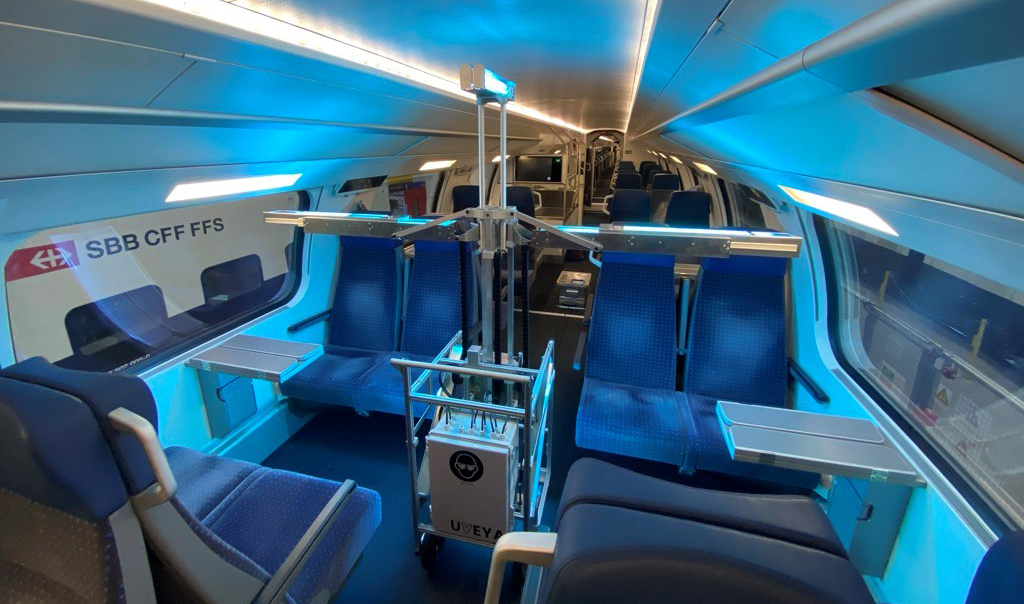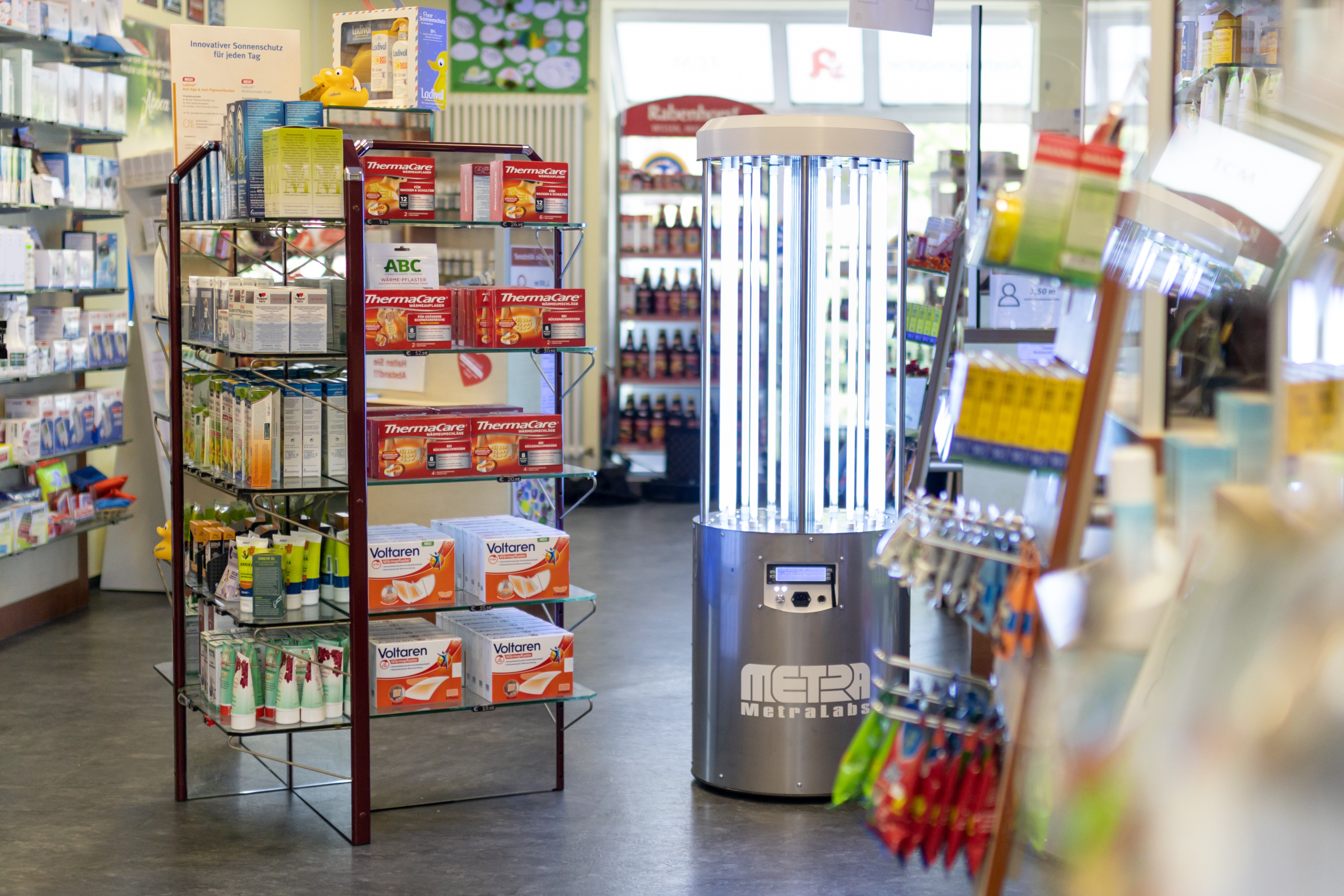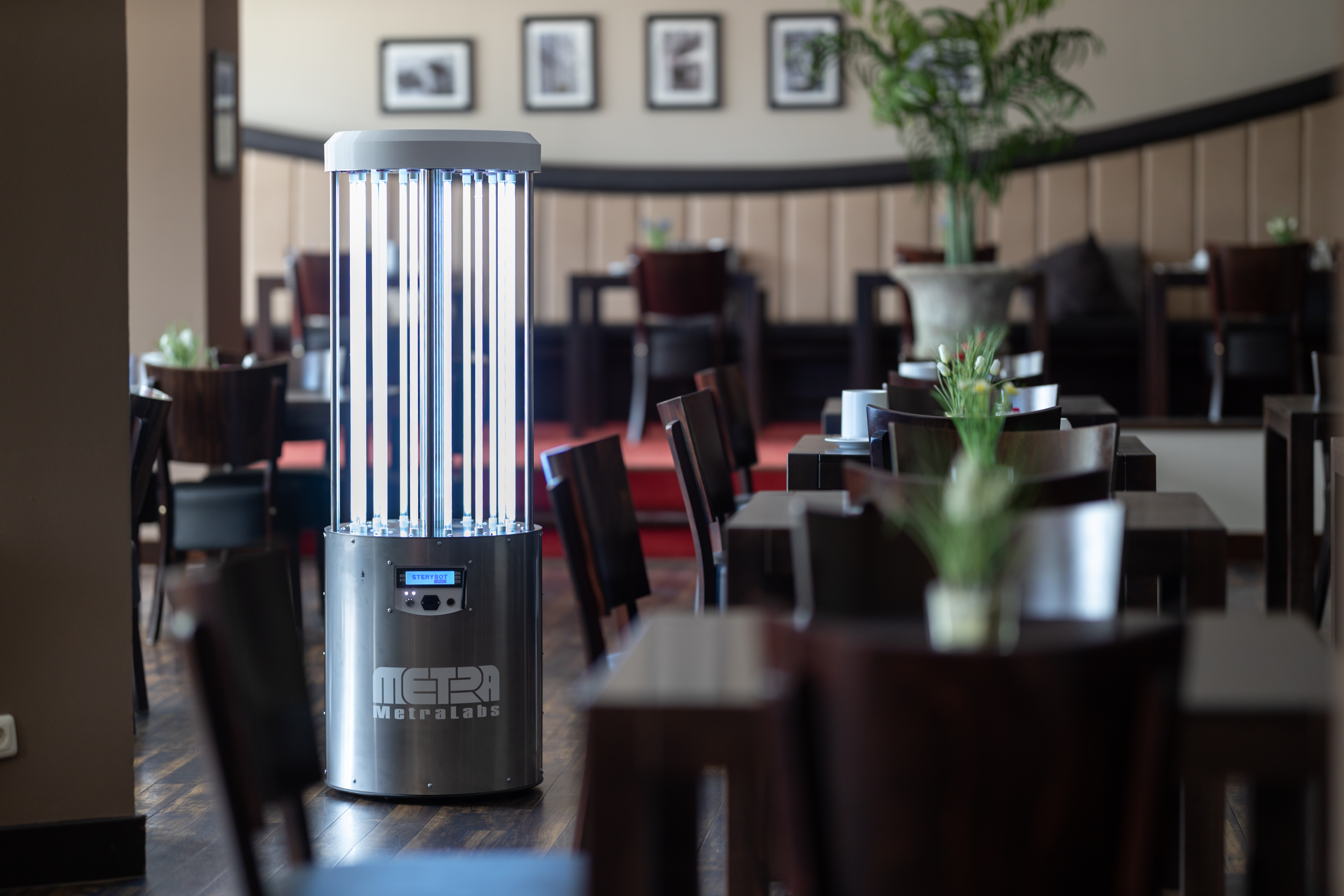
Stabilization of polymer-based coatings against UV-C radiation

Objective
The Corona pandemic was a driver for the spread of UV-C based disinfection devices, which are still in use. Commercially available devices based on mercury vapor lamps (λ = 254 nm) and UV-C-LEDs (260 nm < λ < 290 nm) are now used in many indoor locations such as supermarkets, public buildings and in private settings. Particularly exposed are irradiated surfaces of furniture (e.g., tables, cabinets, wood paneling) and flooring (e.g. laminates), which are often made of painted or polymer-coated materials. Protection of these thin coatings is the focus of this project because the penetration depth of destructive UV-C radiation is extremely shallow and thus can have a major impact on the long-term durability of many high-value products. Effective protection of these materials against UV radiation and especially high-energy UV-C radiation, often does not exist because coatings and surfaces of products for indoor applications are hardly or not at all stabilized against UV radiation.
For outdoor applications, plastics and coatings are stabilized against UV-A and UV-B radiation by additives, but UV-C radiation does not occur naturally and has therefore not been considered in formulation development to date. Consequently it is unclear whether and which additives also provide sufficient protection against UV-C radiation.
It is now clear that once UV-C disinfection equipment is installed, it will be used beyond the corona pandemic and irradiated painted or polymer-coated surfaces will yellow, fade or crack prematurely. The visual appearance and feel of surface of irradiated products are at risk and complaints are foreseeable.
The objectives of the joint project are therefore:
- to test the effectiveness of available UV stabilizers for coatings against UV-C radiation,
- and to identify effective(r) additive combinations on the basis of application-typical additives.
The aim is that paint and coating manufacturers and producers of painted or coated products are able to use the project results to issue specific recommendations for action to their customers in order to avoid complaints.
The additive concepts resulting from the project will be used to test whether and how well UV-C stabilization can be achieved for existing paints, inks and coatings. This should create the opportunity for all participating companies to manufacture and specifically market innovative UV-C-stable materials, formulations and products.
Main focus and approach
To achieve the objectives, the procedure described below is proposed. A detailed agreement will be reached with the project partners at the beginning of the project.
The project work is to focus on
- investigating the effectiveness of marketable UV additives against UV-C radiation and
- developing high-performance protection concepts based on existing additives.
The development itself shall be done on one or two products commonly defined with the consortium (e.g. a varnish and a laminate coating). An application test will be carried out at the end of the project with one product per project partner, if desired.
The additive formulations are manufactured at Fraunhofer LBF on the basis of the selected (unadditive) basecoats. The coatings are cured and exposed to UV-C radiation. At specific times, color and gloss and chemical degradation are examined by FTIR. This is supplemented as required by further coating-specific tests and light microscopic images to record changes close to the surface. In this way, the damage to coatings caused by UV-C irradiation is to be systematically recorded. The choice of measurement methods can also be adapted with the project partners to the selection of coatings and their intended use.
1. Investigation of the effectiveness of existing UV additives
First, the selected basecoats will be equipped with commercially available UV stabilizers. The role of the different additive classes for successful UV-C stabilization in coatings will be investigated. The stress caused by regular, very short UV-C disinfection is comparable to the destructive effect of many years of outdoor weathering. Due to the higher energy of the photons, different degradation mechanisms are to be expected compared to the usual weathering with UV-A/B radiation. The effectiveness of individual stabilizers or entire groups may be reduced or completely prevented as a result. UV absorbers, HALS, quenchers and antioxidants will also be included in the studies with equal participation of the consortium to ensure proximity to application.
For this purpose, the additivated coatings/surfaces will be exposed to UV-C radiation and characterized physicochemically after certain times. As a reference, samples of the same composition will be exposed to UV-A radiation according to standardized procedures and characterized in order to evaluate the effectiveness of the additives in comparison to known UV(-A) exposure.
2. Development of potent protection concepts based on existing additives
Based on these results, a sample formulation with commercially available UV additives will be developed to give the highest possible UV-C protection. The effectiveness of this formulation will be investigated and evaluated for one product of each project participant by UV-C irradiation and characterization by color and gloss measurements as well as by FTIR and optical microscopy. The samples will be provided by the project participants.
The aim is to develop basic protection concepts that the project partners can use to stabilize against UV-C radiation in their existing formulations.
The results will be presented to the project partners in regular meetings and the next work steps will be discussed. At the end of the project, all results will be documented in the form of a detailed research report and made available to the project partners.
 Fraunhofer Institute for Structural Durability and System Reliability LBF
Fraunhofer Institute for Structural Durability and System Reliability LBF
